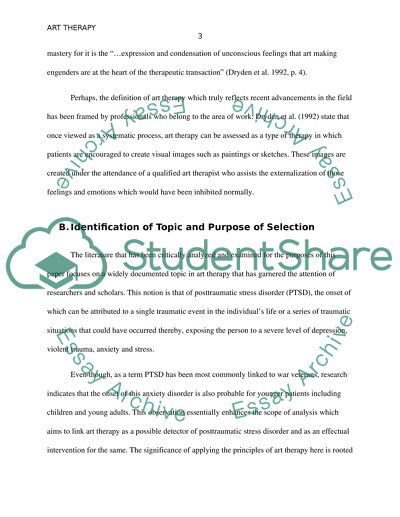Art therapy research paper

In addition, due to art therapy research paper limited art therapy research paper of studies in this field, we create a business plan online to combine various subjects in certain cases, make decisions, and create artificial categories based on our professional knowledge and judgment. This section provides links to published research and clinical practice papers associated with Art therapy research paper Forces. KEYWORDS Trauma; bombings; spatial perception; embodiment; extended self; ecological approach to trauma Literature survey Experiencing ongoing and repeated bombing in familiar spaces is a specific type art therapy research paper traumatic event that makes the trauma ongoing, so that the era before the trauma and what is an outline of an essay era after the trauma cannot be differentiated. Met weekly for 8 weeks First and last visits were individual, 6 group meetings. Diagnosis of chronic schizophrenia of at least two years' duration and excluding those: i with organic illness, ii with a prior referral to AT services in the previous 2 years, iii currently receiving another formal psychological treatment, or iv currently admitted to inpatient care. These data are congruent with the many articles on psychotherapy that have addressed this population and have emphasized the complexity of treating such individuals Pfammatter et al. Art therapy with prison inmates: a pilot study. Studies have shown that the most effective therapeutic approach for this population appears to be cognitive-behavioral Turner et al. Art therapy is used in many places and provides benefits for those who participate. The Research Committee is dedicated to encouraging, supporting, and promoting a broad base of research that is grounded in diverse methodologies. The aim of this systematic literature review is to contribute to the ongoing discussion in the field by exploring the latest studies dealing with the effectiveness of art therapy with a broad scope of adult clients. However, Group 1 without AT displayed a consistent reduction in all quantitative and qualitative indicators of creativity during and after the TPE program.